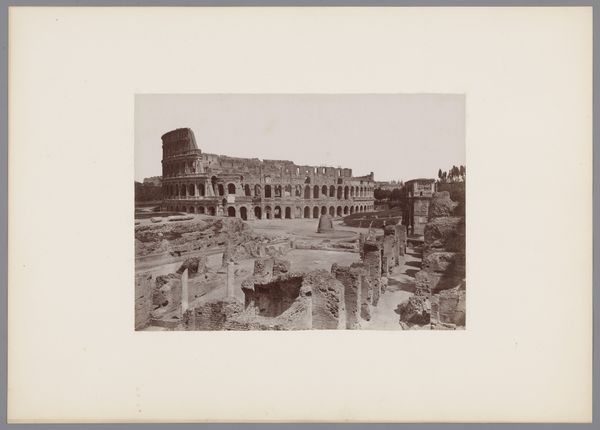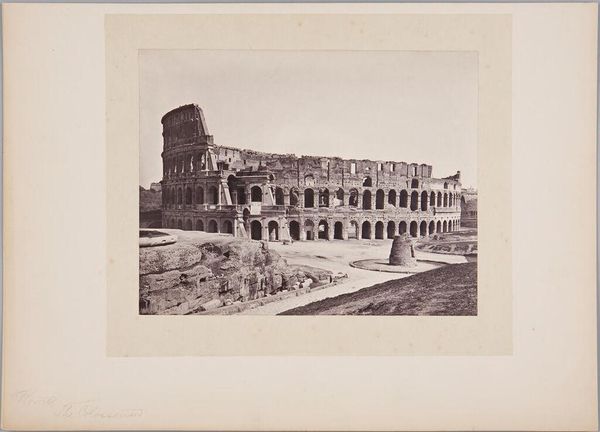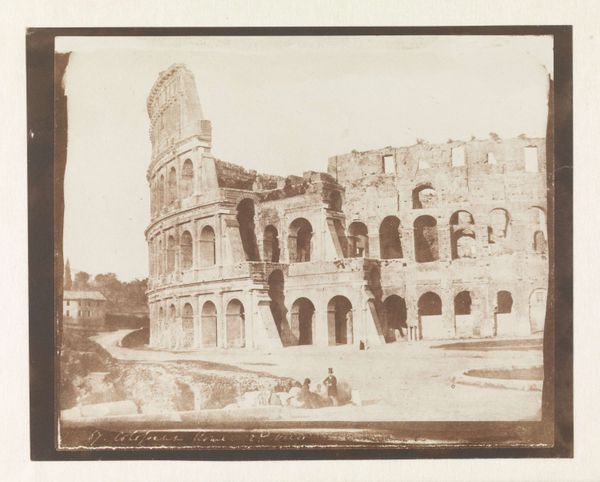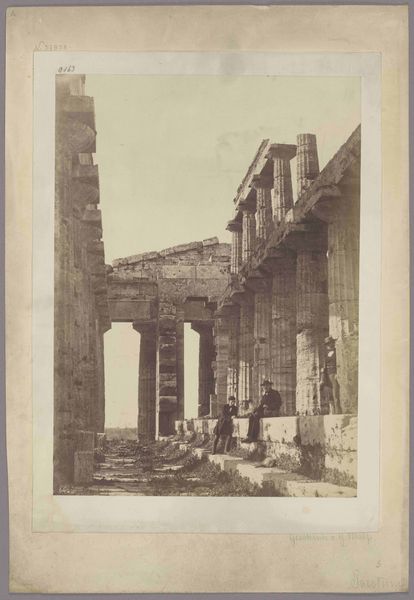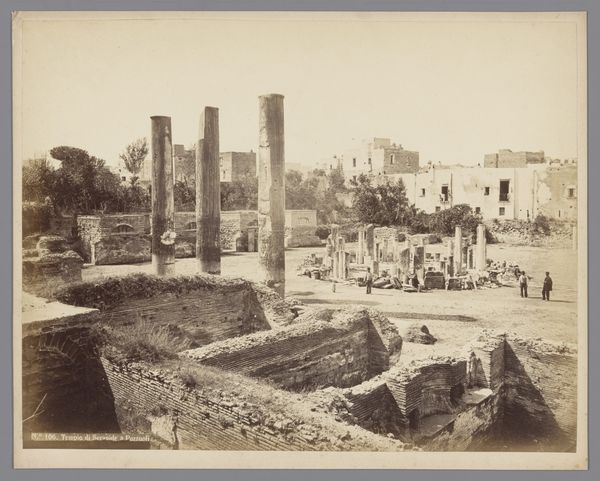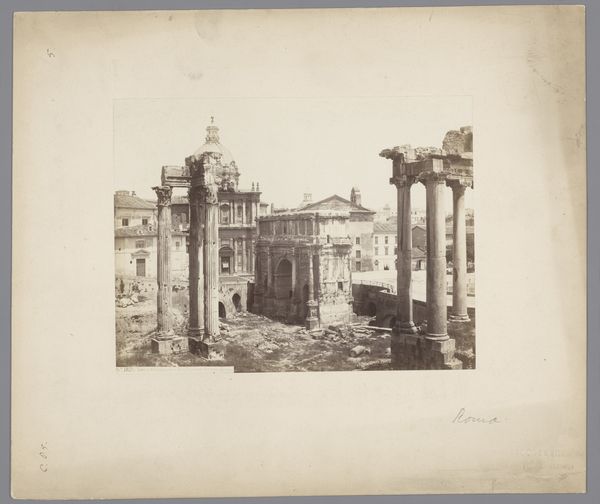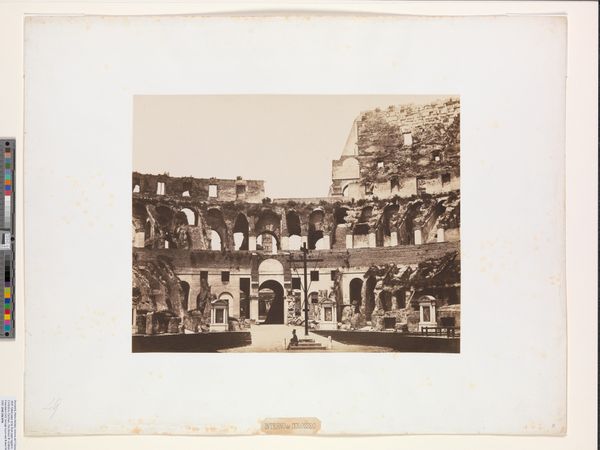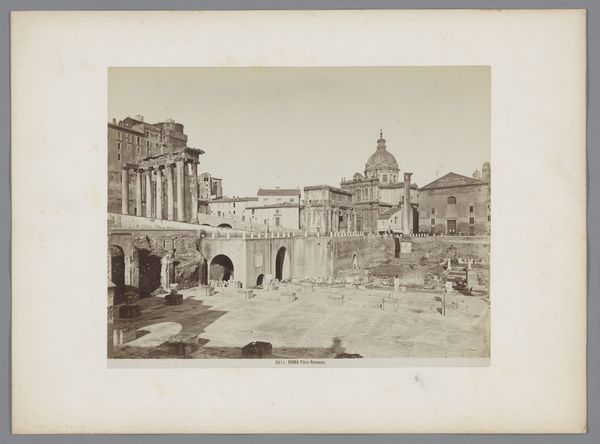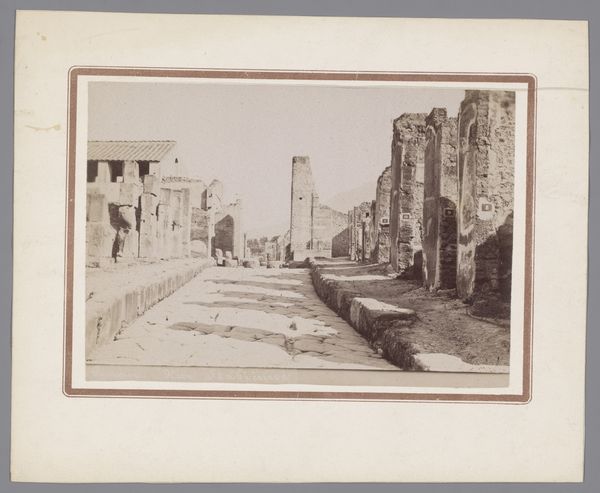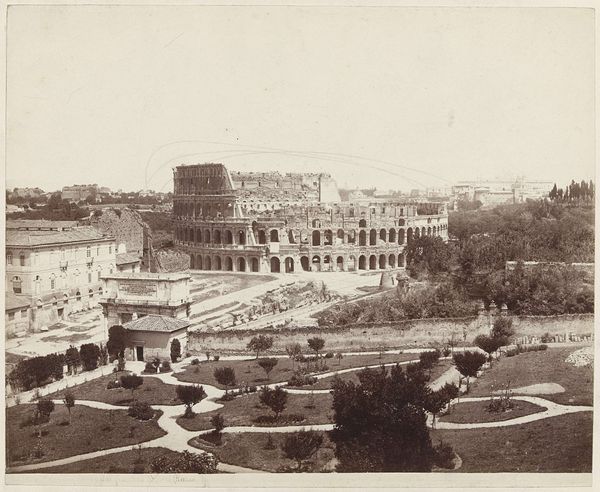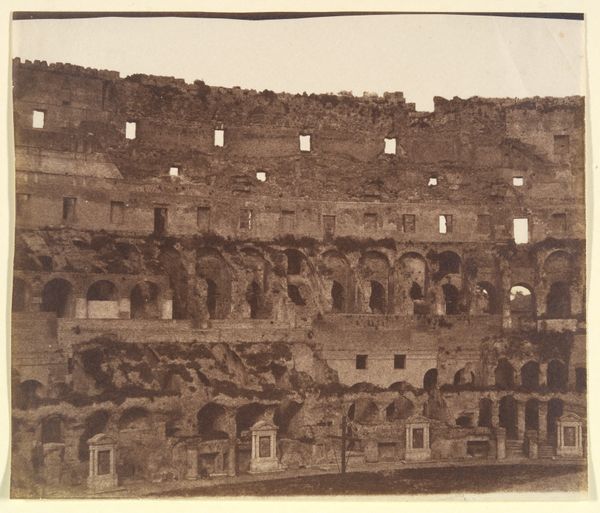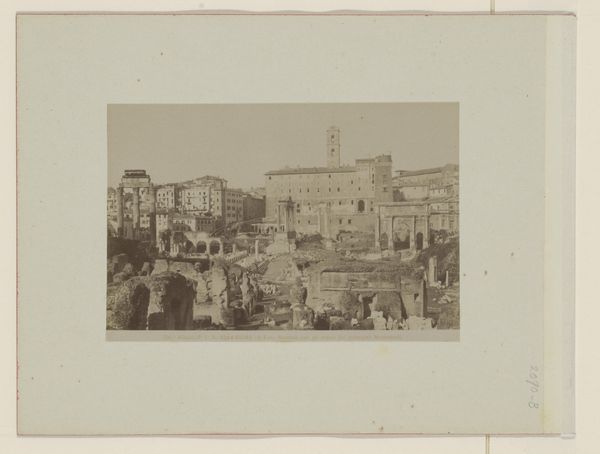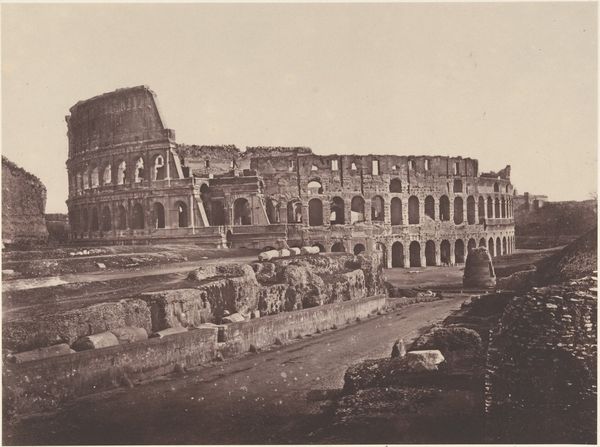
photography, gelatin-silver-print
#
greek-and-roman-art
#
landscape
#
photography
#
ancient-mediterranean
#
gelatin-silver-print
#
cityscape
Dimensions: height 354 cm, width 477 cm
Copyright: Rijks Museum: Open Domain
Editor: Here we have Gustave Eugène Chauffourier's "View of the Colosseum in Rome," a gelatin silver print created sometime between 1857 and 1875. I find the sheer scale of the Colosseum striking, even in a photograph. What stories do you think this image is telling? Curator: It's compelling, isn't it? This image isn't just a record of a monument, but an intersection of power, spectacle, and social history. Think about what the Colosseum represented in ancient Rome: imperial dominance solidified through gladiatorial combat and public executions. Chauffourier, in the 19th century, captures this ruin, now a tourist site, implicitly commenting on shifting imperial ambitions. Editor: Shifting ambitions? How so? Curator: Photography in this era became a tool of documentation, both celebrating and cataloging empires, and this image fits squarely within that paradigm. But, consider the colonial gaze, too: who has access to Rome, who gets to photograph it and circulate these images? These are essential questions we have to ask. Who benefits from seeing a seemingly benign cityscape? Editor: So, this photograph becomes a kind of quiet participant in these larger power dynamics? Curator: Precisely. And the ruins themselves? They become physical reminders, prompting us to confront the complexities of historical violence and how those are mediated to present-day audiences. Acknowledging those uncomfortable aspects embedded in our own aesthetic appreciation allows a more historically accountable viewing. Editor: It’s a lot more layered than I initially thought! I see now that the act of documenting itself carries a certain weight. Thanks for bringing that to my attention. Curator: Absolutely! Always keep interrogating whose stories get told and how in the presentation of these images.
Comments
No comments
Be the first to comment and join the conversation on the ultimate creative platform.
